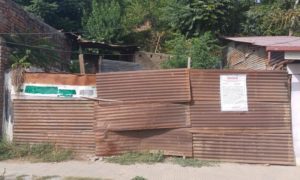Part of history, and horror now, the happenings of the 90s—when military operations like ‘Catch and Kill’ would subject the rebellious population to an unthinkable onslaught—is still intact in the form of dusty newsprints in the Kashmir’s highest seat of learning.
Some of the headlines are simply bone-chilling…
Like the one making it to the front-page of Srinagar Times on August 3, 1993:
“During the past 24 hours, 30 dead, including 5 women and 3 children.”
A daily dose of head counts, in dozens, had become a disturbing normal in Kashmir.
“10 known and unknown persons killed during past 24 hours,” reads another yet-to-be faded kicker.
Perhaps this tells us of a time when violence was integrated with the daily routine. It won’t be wrong to call the people of Kashmir who got to live through these times anything less than ‘survivors’.
The conflict reporting, done by these local newspapers, seemingly had an impact on the international community. This is confirmed by a particular advertisement by Amnesty International, United Kingdom. It mentions that they are interested in obtaining a photograph for their forthcoming publication, which was published in ‘Daily Aftab’ (wrongly spelt as Artab) on 4th November 1992.
The photograph was of a demonstration to against custodial killing done by the Indian forces.
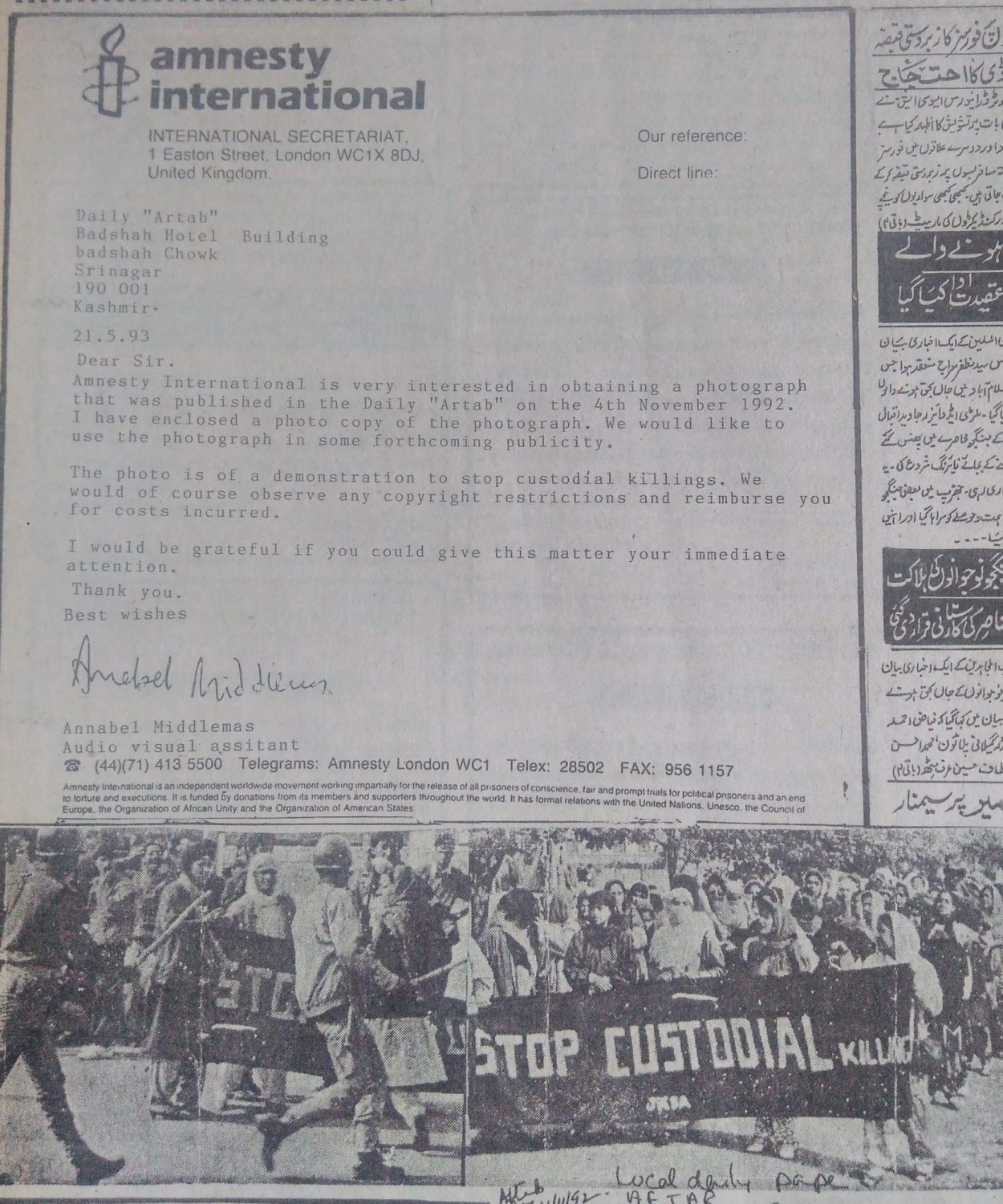
(FPK Photo/Ali Saifuddin)
The headlines, specifically from the early and mid-nineties looked like death toll notifications. Almost every week, a new number of death tolls, custodial killings and missing people flashed in the headlines.
Srinagar Times which was an Urdu daily tagged an English translation of the death toll with its headlines.
What we see in these newspapers is pure war journalism. The subject matter being mostly conflict. It wasn’t just covered by foreign reporters, but local journalists putting their lives on the line also documented the Dark Decade. There is a kind of dreadful horror that lurks in these archives.
The grave documents
The Kashmir University is one of the most prestigious educational institutes in the valley of Kashmir. Its most recognizable building is the centrally located, 7-storey tall Iqbal Library. The library is magnanimous, both in terms of quality and quantity of knowledge it offers.
Each floor of the building is dedicated to a particular subject pertaining to a specific department. On the sixth floor, the library for social sciences and Newspaper archives has the most essential historical documents of the most turbulent times in the history of Kashmir – The Nineties.
The archival portion of the sixth floor is stacked with newspapers, both local and international, dated as early as the 1960’s.
Interestingly, newspapers from the pre-90s era, show a different world, almost impossible to believe after going though the disturbing images, tales of a time where advertisement of movies screening in the local cinemas and circus ads were possible.
Advertisement of whiskey brands, particularly on Khud-Khidmat times from 1975, light political satire, poetry sections and the political subject matter more focused on International affairs, than internal political disputes and death tolls sits on top of a pile. All of this depicts an era which can be termed anything but gloomy.
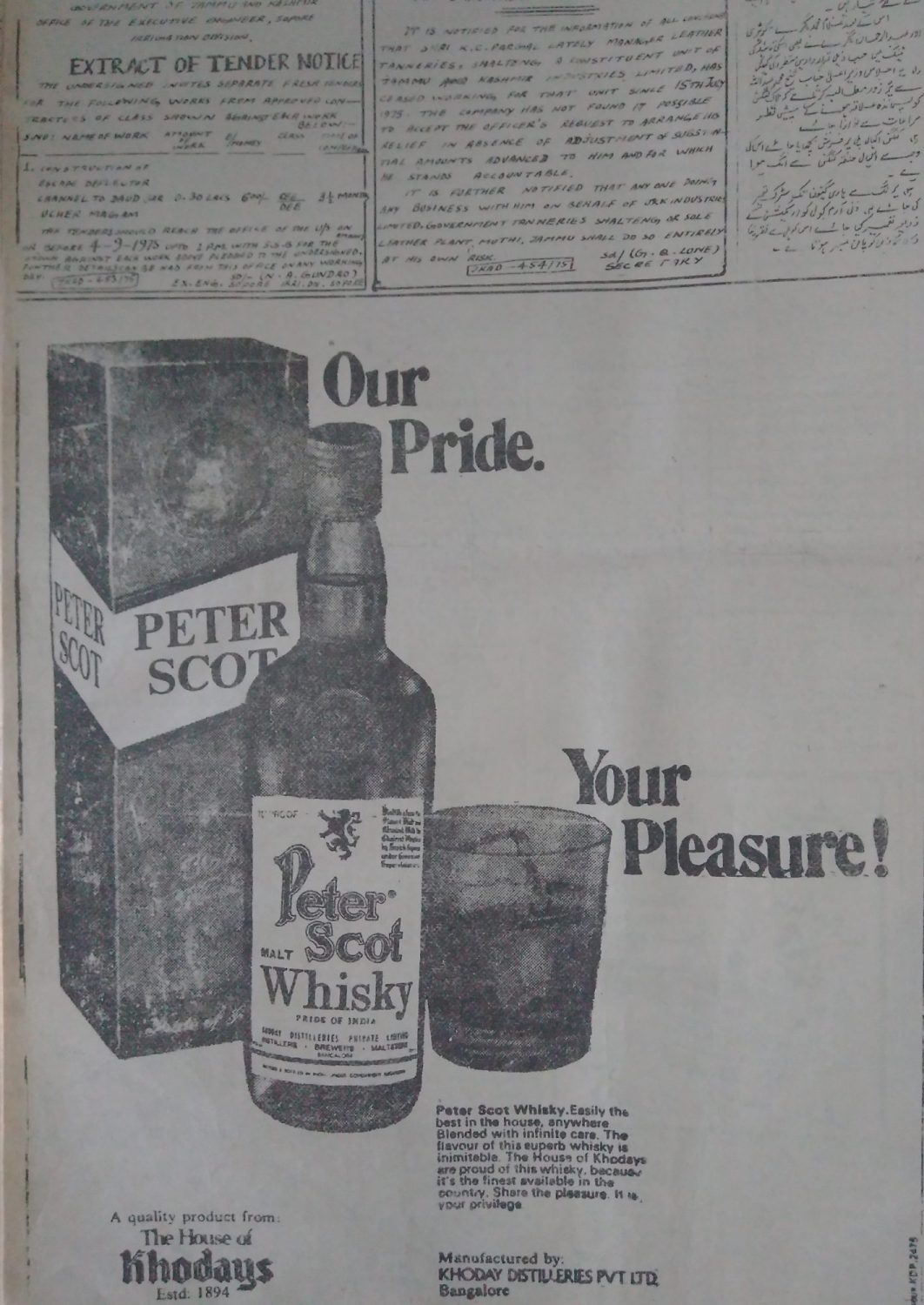
(FPK Photo/Ali Saifuddin)
But it’s the newspapers from 1989 which, when you open, will take you to the advent of the darkest chapter in Kashmir in terms of large-scale violence and deaths.
“Ye upper 6th floor pe mera asli khazana hai (Up on the sixth floor is where the real treasure is),” Dr. Abdul Majeed Baba, chief librarian Iqbal Library, said.
After the ’89 blast, he felt an intuition to document the coming decade. Although the archival process was present earlier, but during the tense decade, Dr. Baba made sure that a copy of each local newspaper delivered to them was archived properly.
“I knew what its value would be ten years down the line,” said Dr. Baba, who is very passionate about the archival project.
For years he has been planning to upload this archival data online. “I have this idea that on a site, you enter the year, the date, the district or the mohalla, and you get the specified news from that time period through the archives,” the librarian said.
He hasn’t been able to find the right expertise to implement his idea so far.
There is a mention of the archive on the Kashmir University website in the Library section as well. It also shows the list of newspapers which are archived there, from international newspapers like London Times to local daily newspapers.
Besides serving as a valuable asset for research purposes, the archive also serves as a source of evidence for various court cases. Most significant events of the nineties are reported and recorded here.
“It has proven to be a useful source for judicial probes,” Dr. Baba said.
“If you study the local newspapers from Kashmir, in chronology, starting from the 60s to the 90s,” says a varsity student, “It’s heart-wrecking to know what the people of the valley during the last decade of the millennium faced.”
“As kids”, says another student, born in the nineties and seeing these newspapers, “we get a glimpse of what we were born into, so much violence every passing day.”
These archives are not mere printed documents. They have a specific cultural value, offering a peek into the past, and serving as a historical asset, of memory. The collective pain and sufferings endured by the Kashmiri community, it seems, is registered in these archives.
The Witness and the obituaries
Like in the advertisement section of dailies, like Srinagar Times and Al-safa, one can find posters celebrating 14th August (Pakistan’s independence) as Youm e Azadi and posters displaying solidarity with Pakistan.
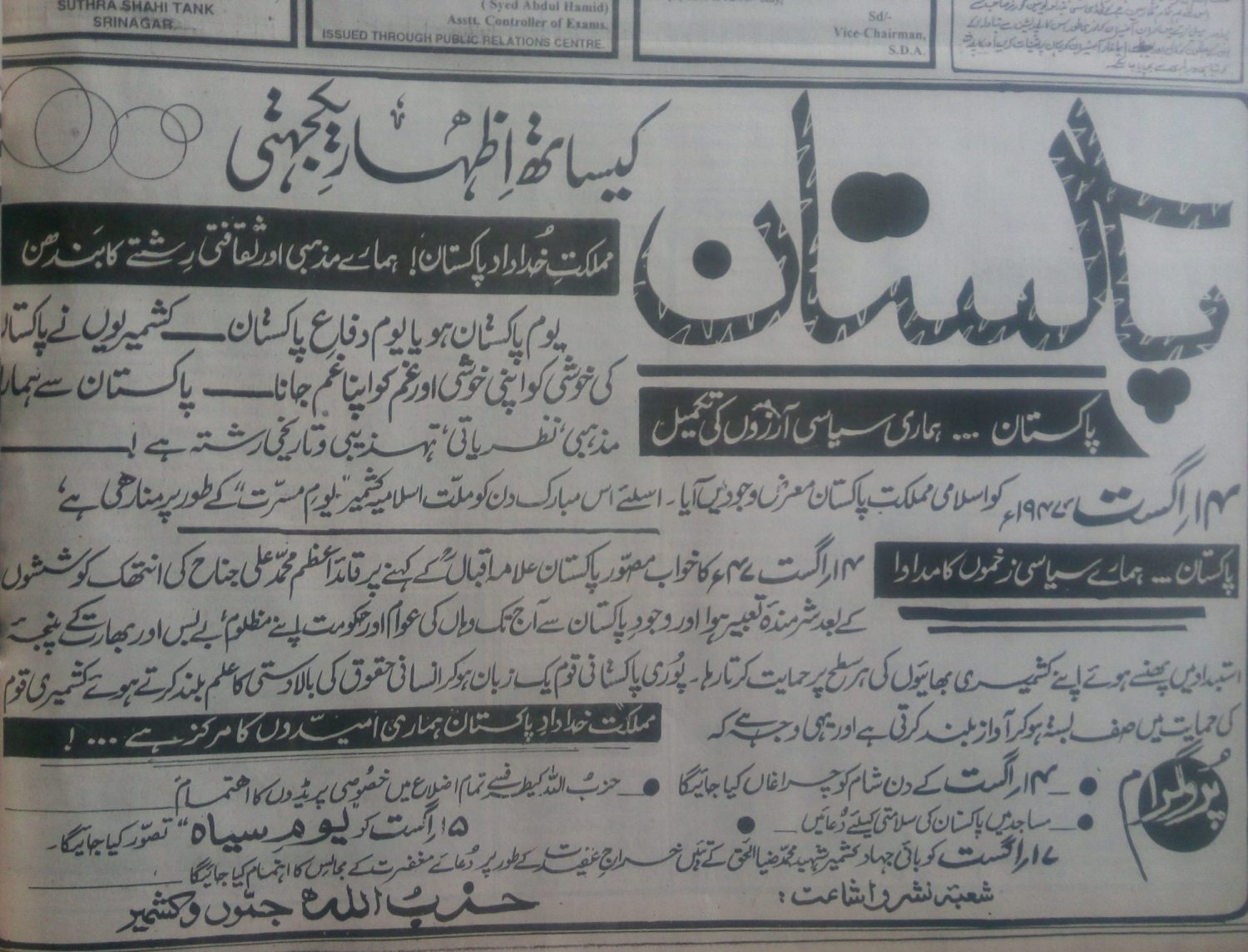
(FPK Photo/Ali Saifuddin)
What grabs your eyes the most are these one-page obituaries, and commemoration of slain militants, occurring almost every month.
These obituaries often sport the pictures of the slain person, and are designed beautifully, with popular revolutionary couplets decorating them.
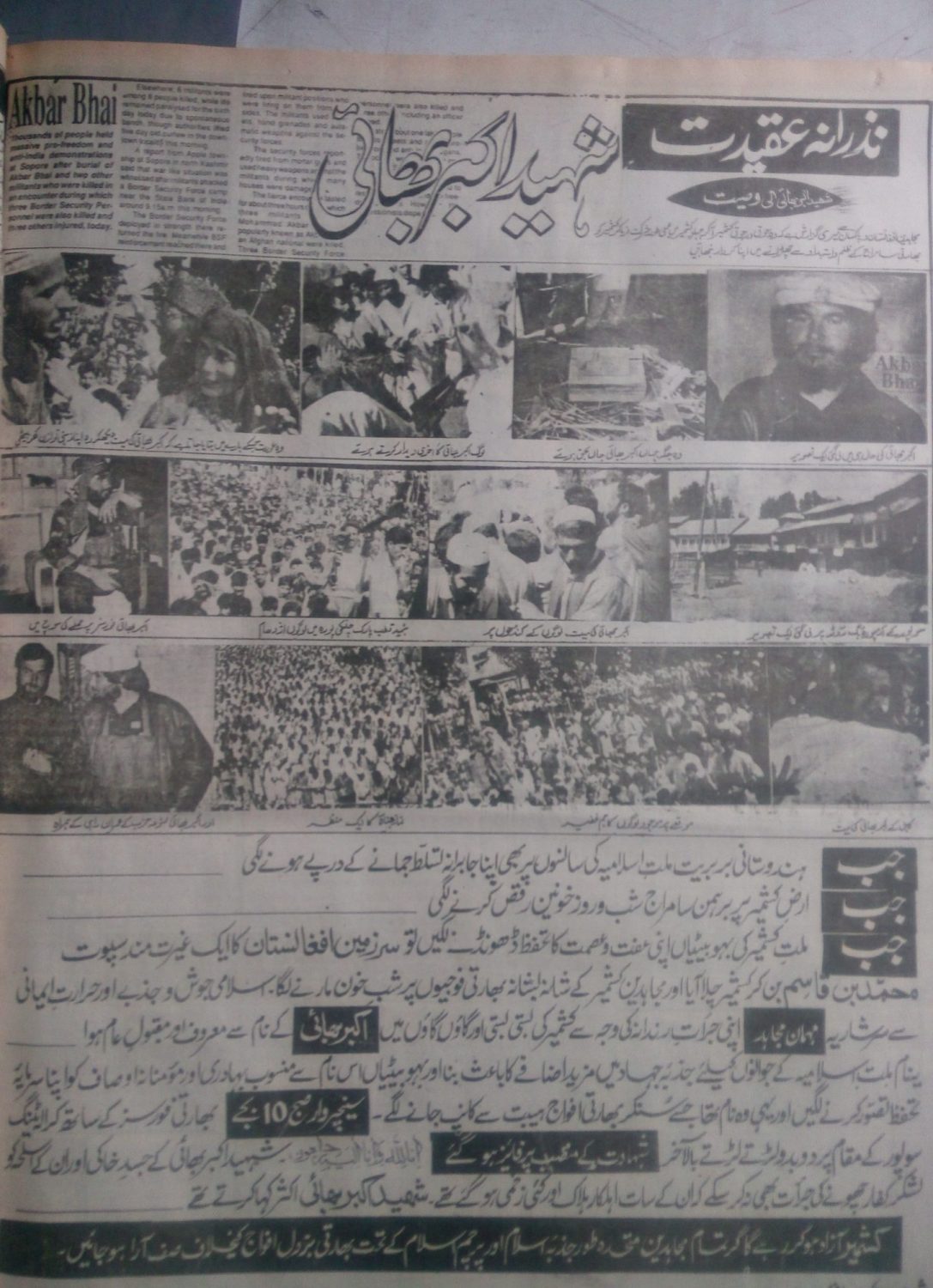
A full page obituary of a foreign militant called ‘Akbar Bhai’. (FPK Photo/Ali Saifuddin)
Witnessing this period made Kashmir’s veteran photojournalist, Mehraj-ud-din do something ‘unusual’.
At the launch of The Witness, a photo book featuring his and his young colleagues’ work, he said: “I used to carry two identity cards, one in each pocket because I had seen the bodies which couldn’t be recognized, and I knew it well that once I left home to cover the conflict, there was a huge possibility that I wouldn’t return alive!”
Back in the day, the newspapers weren’t just newspapers—they were scripts of a battlefield, a battlefield which was Kashmir.
Free Press Kashmir is now on Telegram. Click here to Join.
Like this story? Producing quality journalism costs. Make a Donation & help keep our work going.





